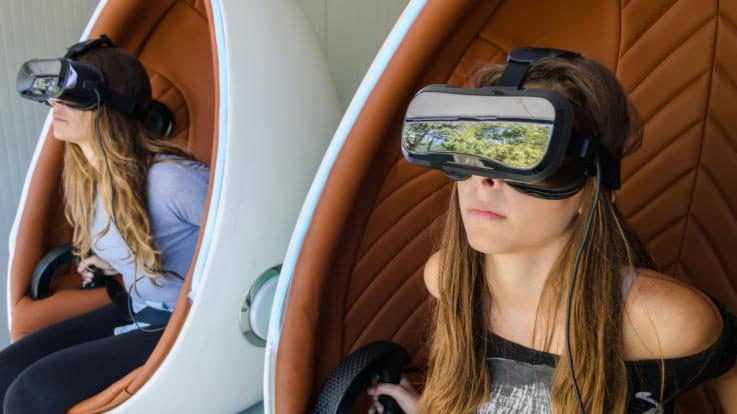What Fashion Month Tells Us About the Future of Retail Marketing


iQmetrix takes a look at the retail marketing trends that fashion month is pioneering in this guest post.
Fashion month is a great indication of the upcoming trends in retail. Across shows in New York, London, Milan, and Paris, companies can gain a better idea of the upcoming fashion trends and the retail methods used to market them.
As omnichannel marketing strategies become the norm, the distinction between fashion and technology becomes increasingly blurred. With wearable technologies and new virtual merchandising methods on the rise, retailers are introducing innovative products that equip consumers with the latest tech and give companies new ways to garner customer data.
Here are key takeaways from fashion weeks worldwide that retailers should take into account for their merchandising strategies.
All-digital presentations may replace the runaway
While Samsung may not be considered a “high fashion” brand, the company had a strong presence at this year’s New York Fashion Week. The company partnered with fashion-production firm FTL Moda to stage a virtual-reality fashion show where attendees wore Samsung’s gear VR headset that gave a 360-degree view of the clothing designs.
Though the event took place during New York City’s fashion week, the show “whisked attendees away” to Italy through footage shot in Milan earlier that month. This virtual red-carpet experience allowed guests a much closer view at collections than they’d get from a traditional show, and gave them the option to linger on certain designs. Following the event, attendees could review the products on Samsung tablets or on digital mannequins backstage.
By allowing attendees to virtually engage with the clothing at their own pace, Samsung and FTL Moda showcased the revolutionary potential of virtual reality merchandising: not only does it offer consumers more control over their viewing experience, but it also gives brands an additional opportunity to glean important data on which items, colours, and trends are particularly appealing to their audience.
Digital displays will continue changing the in-store experience
Another prevalent technology at Fashion Week worldwide was the use of digital mirror displays. Rent the Runway, an e-commerce company that has expanded its presence with a 4,000 square foot flagship brick-and-mortar store, has already merged virtual and physical space through interactive mirrors that combine LCD screens with mirror glass. The screens, which fashion-week attendees were able to try backstage, allowed customers to virtually try on clothes and makeup. These screens streamlined the shopping process by allowing customers to quickly “change” styles, sizes and colours of clothing.
These interactive displays have the potential to eliminate traditional clothing displays and the amount of space, storage and change rooms a brick-and-mortar location will need to operate. It may also replace the role of traditional retail workers, as shoppers will be able to virtually try on clothing recommended by an algorithm rather than interacting with store employees.

Fashion worlds may become more inclusive
As digital technologies allow more people to engage with designer collections and virtual “runways”, Fashion Week worldwide may become more accessible and less prestigious. For example, data from London Fashion Week showed that Instagram had the most interactions of any platform during the show. In particular, working with influencers drove traffic to the platform, with many brands inviting popular bloggers to create video content through their accounts during the event.
Similarly, Burberry took to SnapChat to relay their “behind the scenes” experiences during Fashion Week. By using these social platforms to reach their audiences, brands are involving their customers in their once-elite fashion events to help generate more interest around their upcoming collections.
As mobile technologies in particular become more efficient and pervasive, Fashion Weeks worldwide will likely continue to involve their customers in the experience—for example, by making the same VR fashion shows available to in real-time from the comfort of consumers’ own homes.
The customer profile will become more detailed and complex
These types of technologies demonstrate how omnichannel strategies are resulting in customer-centric solutions that centre around the shopping experience. With new visual merchandising techniques, customers will have increasingly customised shopping experiences catered directly to their preferences. At the same time, these technologies are able to use the shopping experience to gather more information about the consumer.
With virtual reality technologies and new forms of digital signage changing the way people interact with brands, companies will be able to develop highly complex and detailed customer profiles that not only take into account previous purchase history, browsing habits, and consumers’ preferred shopping channels, but will also record customers’ eye-movement in VR, attraction to certain designs or fabrics, levels of indecision, and so on.
As these practices become more widespread, brands will need to develop even more sophisticated omnichannel strategies to continue reaching their customers and providing exceptional, customised service.
Want to ensure your company is making the most of its visual merchandising strategies? Learn more about how to optimize your marketing efforts across all channels.
Find out how we can help you identify and discover the breakout trends in offline and online retail that will put you years ahead of your competition. Get in touch here.
Photo: Shutterstock / Fashionstock.com



